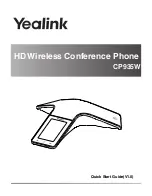
Expansion Stages and System Capacity
45
Aastra 415/430 as of R3.2
syd-0344/1.6 – R3.2 – 09.2014
ways required between IP and non-IP endpoints, e.g. for internal connections
between an SIP/IP phone and a digital system phone or e.g. for an external user
who is routed to the internal voice mail system via an SIP network interface. In
an AIN VoIP channels are also used for call connections between the nodes (see
"Use of VoIP channels", page 46
for an overview).
The number of configurable VoIP channels depends on both the type of DSP
chip (see
"Configuration of DSP chips", page 48
) and the configured mode (see
"Standard Media Switch modes of operation", page 47
).
If the VoIP mode is set to G.711, two G.711 VoIP channels per system can be used
without a licence. One
VoIP Channels for Standard Media Switch
licence is re-
quired for each additional VoIP channel.
•
FoIP
For reliable real-time fax transmissions via an IP network using the T.38 fax pro-
tocol (ITU-T). FoIP channels can be used without a licence.
•
Audio services
These voice channels are used to play back and record audio data. Additionally,
each audio channel is assigned a DTMF receiver for enabling user inputs during
playback. This requires licences (
Enterprise Voice Mail
,
Audio Record & Play Chan-
nels
,
Auto Attendant
) and DSP resources.
The voice channels can be used for voice mail, auto attendant or call recording.
The allocation is configurable (see
"Reserving audio channels", page 47
).
The number of configurable voice channels depends on both the configured
mode (see
"Voice-mail system modes of operation", page 48
) and the type of
DSP chip (see
"Configuration of DSP chips", page 48
).
•
GSM
Enhanced functionality is achieved for integrated mobile phones by providing
special DTMF receivers during the call connection. Suffix dialling functions (such
as enquiry calls or setting up a conference with function codes ) can be carried
out as a result. The number of GSM channels – and therefore the number of
DTMF receivers – is based on the number of users with integrated mobile
phones capable of using this functionality simultaneously.
One
Mobile Phone Extension
licence is required for each integrated mobile
phone.
•
CAS
CAS (Channel-associated signaling) is a signalling protocol for PRI network inter-
faces used in certain countries (e.g. Brazil). This setting provides the tone sender
and receiver for transmitting signalling information.
















































